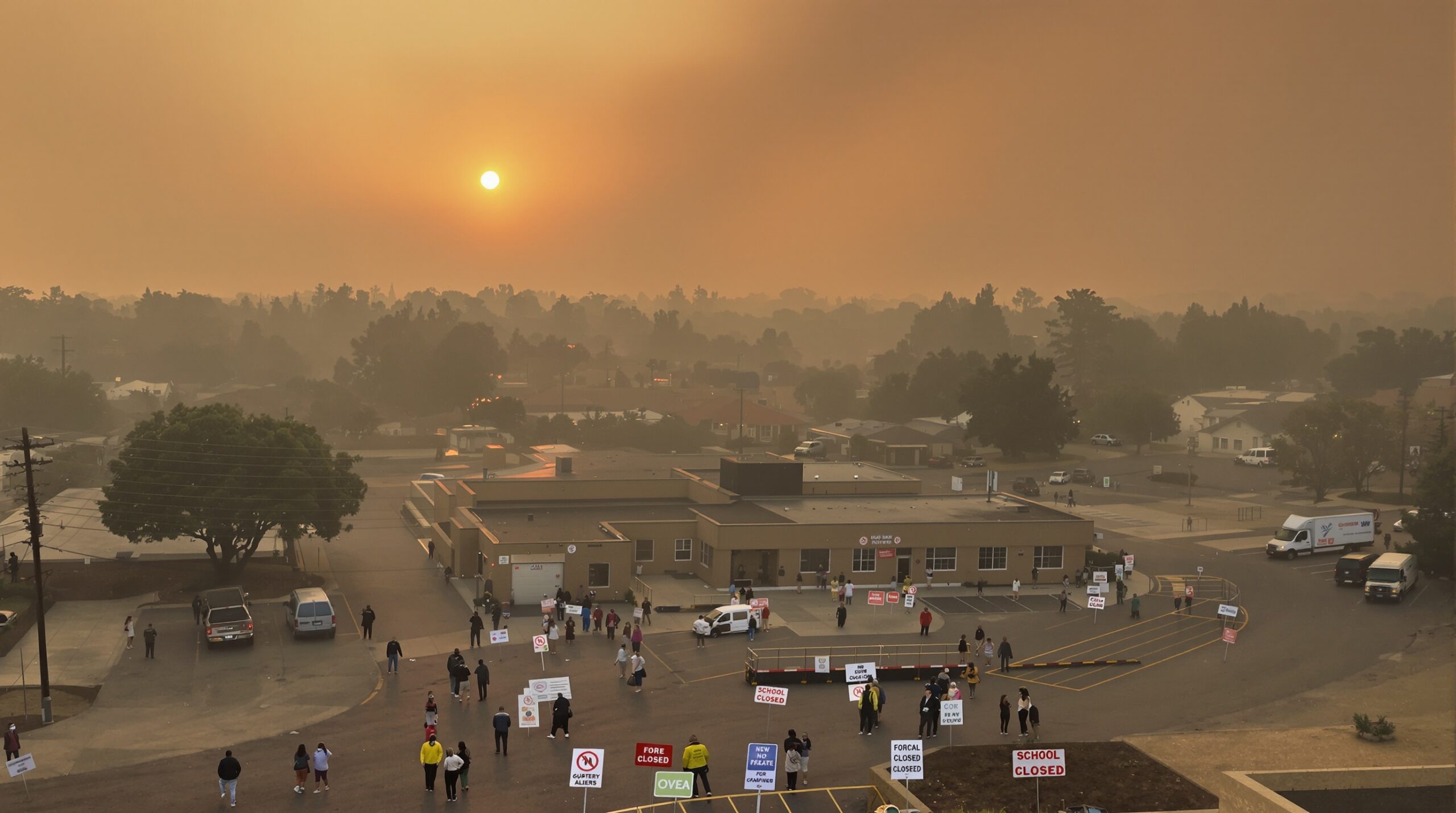Wildfire season in North America has become more severe, impacting millions across multiple states. In recent weeks, vast plumes of smoke from uncontrolled wildfires have drifted over large regions. This has prompted widespread air quality alerts and forced the closure of many schools, affecting daily routines for students, families, and local businesses.
The Escalation of Wildfires
Warmer temperatures and prolonged droughts have contributed to the intensity and frequency of wildfires. Forests across the West and Canada have become tinderboxes, igniting more easily and burning longer than before. Fires, such as those currently burning in California, Oregon, and British Columbia, produce thick smoke that can travel hundreds of miles. Weather patterns often trap this smoke over populated regions, decreasing visibility and worsening health risks.
Widespread Air Quality Alerts
As wildfire smoke travels, it brings dangerous levels of fine particulate matter known as PM2.5. This can penetrate deep into the lungs and enter the bloodstream. State and local authorities use the Air Quality Index (AQI) to inform the public about daily air conditions. When AQI readings surge past 150, air quality is classified as “Unhealthy” for everyone, not just sensitive groups. These alerts have now stretched from the West Coast through the Midwest and even into the Eastern United States.
States Most Affected
Many states are experiencing unhealthy air for several consecutive days. Washington, Idaho, Montana, and Colorado all report persistent smoke coverage. The situation has expanded into Midwestern cities like Chicago, Detroit, and Cleveland. Satellite imagery revealed heavy smoke blanketing large swaths of these regions, sometimes even reaching northeast states such as New York and New Jersey. The wide impact demonstrates the far-reaching effects of wildfire smoke events.
Health Advisories for the Public
Health departments issue advisories urging people to limit outdoor activities when air quality worsens. Children, seniors, and those with lung or heart conditions are at greatest risk. Recommendations include staying indoors, running air purifiers, and using N95 masks if outside travel is necessary. Hospitals report increased numbers of patients with asthma and respiratory distress during significant smoke events. Public health messaging stresses the importance of monitoring air quality updates during wildfire season.
School Closures and Educational Disruptions
Prolonged exposure to hazardous air has forced many school districts to make quick decisions. In areas with the highest AQI readings, schools have canceled classes or transitioned to remote learning. Students and staff are vulnerable to health risks when traveling to and from school and during outdoor recreation. Each closure decision depends on AQI thresholds, often set by local health and education authorities.
Impact on Students and Families
School closures create challenges for families, particularly those who rely on schools for meals or safe daytime supervision. Remote learning may be implemented, but not all families have equal access to technology or internet services. Special education students and children needing extra support face additional hurdles. Districts must communicate clearly with families about closures, safety steps, and when buildings will reopen.
Long-Term Educational Concerns
Repeated closures due to air quality can disrupt learning schedules and delay important educational milestones. Teachers need to adapt lessons and provide resources for at-home study. Many schools are investing in better air filtration systems and ventilation to limit future disruptions. Policy discussions now include ways to support both academic continuity and student health as wildfire seasons intensify.
Economic and Social Effects
Air quality emergencies have broad impacts beyond schools. Businesses suffer as workers call out sick, and outdoor events are often postponed or canceled. Construction, agriculture, and tourism industries face direct losses as air health warnings limit operations. Local economies must adapt to frequent disruptions, while regional authorities track economic damage alongside public health concerns.
Community Response and Support
Community centers often become clean air shelters, providing safe indoor spaces for vulnerable residents. Charities and government agencies distribute air purifiers and masks to those in need. Local media and public health officials play essential roles in distributing up-to-date information about changing air quality and available support services. Collaboration helps minimize the impact on those most at risk.
Monitoring and Mitigation Efforts
Technology helps communities anticipate and prepare for smoke events. Agencies such as the EPA and NOAA use satellite data to forecast smoke movement. Real-time air quality apps and online tools now allow residents to check conditions in their neighborhoods. Many cities are considering longer-term strategies, such as expanding green spaces and increasing tree cover, to capture particulates and improve resilience.
Fire Suppression and Prevention
Fire crews, often supported by the National Guard and international partners, work to contain wildfires and reduce smoke emissions. Governments emphasize prevention by promoting controlled burns, clearing dead vegetation, and creating defensible zones around populated areas. Effective suppression and prevention can limit future air quality crises, but climate change remains a driving factor behind larger and hotter wildfires.
Looking Ahead: Adapting to New Realities
Communities across North America are now grappling with the lasting consequences of more intense wildfire seasons. Air quality alerts and related school disruptions may become more common as climate patterns change. Leaders, educators, and public health officials are building plans to better respond to smoke emergencies in the future. Ongoing research explores how to improve forecasting, prepare facilities, and protect the most vulnerable populations.
Through coordinated action and awareness, communities can strengthen their resilience to the challenges posed by wildfire smoke. As new policies and technologies emerge, the focus remains on safeguarding public health and minimizing disruption. The adaptation to more frequent smoke events will require ongoing investment, collaboration, and public engagement.

